The squares of Rome are part of the charm of the city. They are usually meeting places for tourists, very busy, with charming terraces and a lot of movement. And it is that the history of Rome is also linked to its squares, between monumental buildings, archaeological remains, ancient churches, its markets…
They are the ideal way to get to know life in the city. Many of these squares contain some of the most famous fountains in Rome. And it is that it is the city in which there are more fountains. It has some 2,500 fountains throughout the city, water that by the way, due to its quality, can be drunk through the so-called nasone. The nasone are the fountains that are in almost all the streets of Rome, of which 280 are in the center. Thus, they give drink to tourists who visit the Italian capital.
One of the oldest, and which is still in operation, is the one in the Plaza del Pantheon. In the Rome of the 1st century AD. Nine aqueducts had been built, which would later become eleven, to supply the entire city. As usual, a large fountain was raised at the end of each of them. Some of them were merely decorative, but others were fundamental in the daily life of the Romans.
Water consumption in ancient Rome was 160 million liters a day. With this measure, hygiene, fire control, social life in the baths, etc. were also guaranteed. Writing about the most beautiful squares and fountains in Rome is a challenge, even a daring. Below is a list of some of the best known and most visited.
Fontana di Trevi
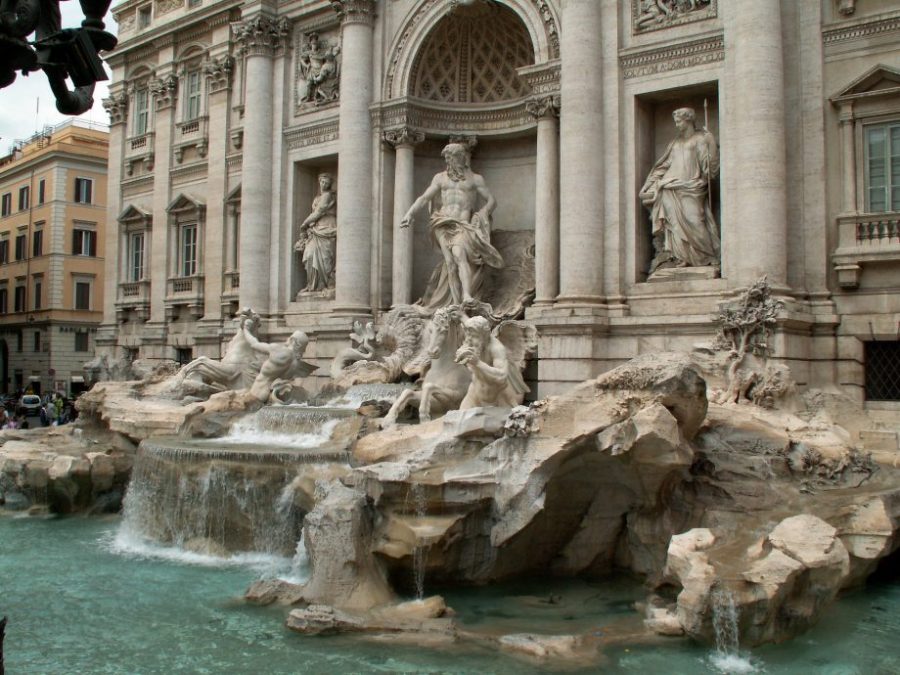
The best-known square outside of Rome is the Fontana di Trevi. It is situated at the intersection of three streets, marking the end of the Acqua Vérgine, one of the ancient aqueducts that supplied water to Rome. Pope Urban VIII, in the year 1629, asked Gian Lorenzo Bernini to outline a renovation of the existing fountain. When the pope died, the project was paralyzed.
In 1730, Pope Clement XII organized a new contest and Nicola Salvi was responsible for its creation. The Trevi Fountain was completed in 1762. Tradition has it that you have to throw a coin backwards into the fountain to ensure your return to Rome.
Piazza Venezia
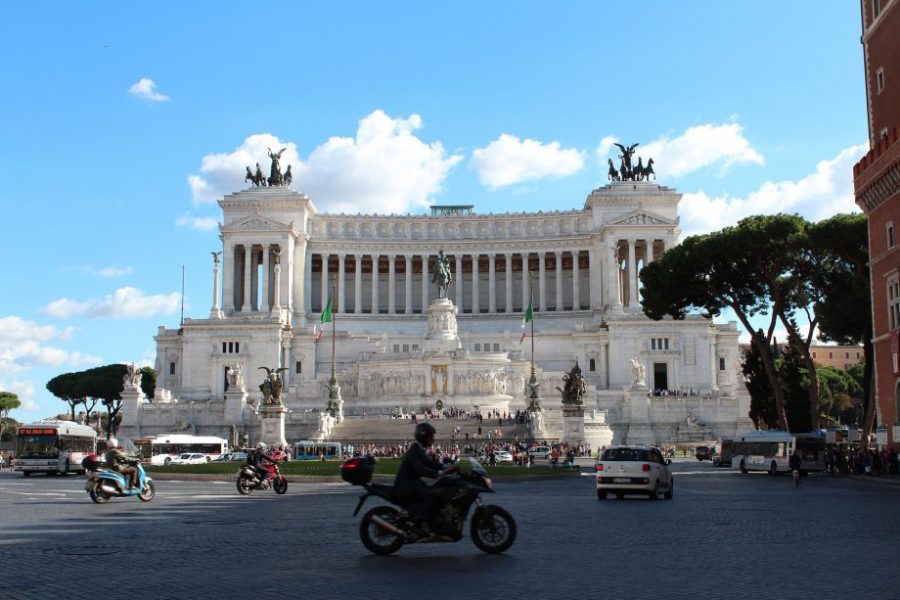
Piazza Venezia is one of the nerve centers of the city. The square is located at the foot of the Capitol Hill and takes its name from the Palazzo Venezia. In this Palazzo, an earth-colored building, Benito Mussolini had his office in the Sala del Mappamondo, and used its main balcony to address the people in many of his innumerable speeches.
In the 15th century, Pope Paul II watched from the palace the horse races that took place on the Via del Corso. It is currently the headquarters of the Library of the Institute of Archeology and History of Art of Rome. It is presided over by the Monument to Vittorio Emanuele II, erected to honor the homeland after Italian unification. The tomb of the “unknown soldier” is located on its stairs, in memory of all the soldiers who lost their lives during World War I and who were never identified.
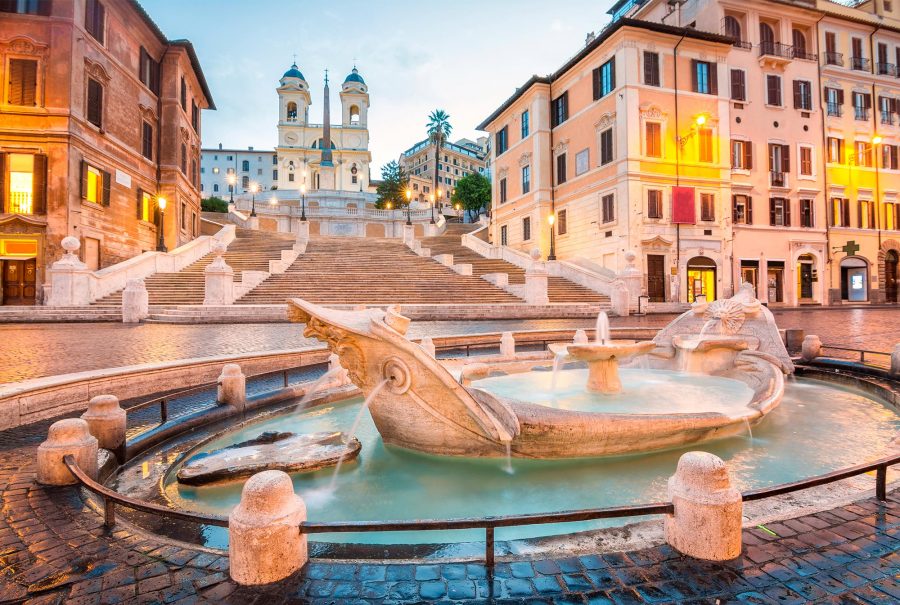
The Spanish Steps is one of the most emblematic places in Rome. Its monumental 18th-century staircase makes it one of the busiest places in the city. It owes its name to the Embassy of Spain to the Holy See and to the Order of Malta, which is located in the Piazza. The square is located at the crossroads of Via del Babuino, which leads to Piazza del Popolo and Via del Condotti. In the center we can find the Fuente de la Barcaza.
Campo dei Fiori
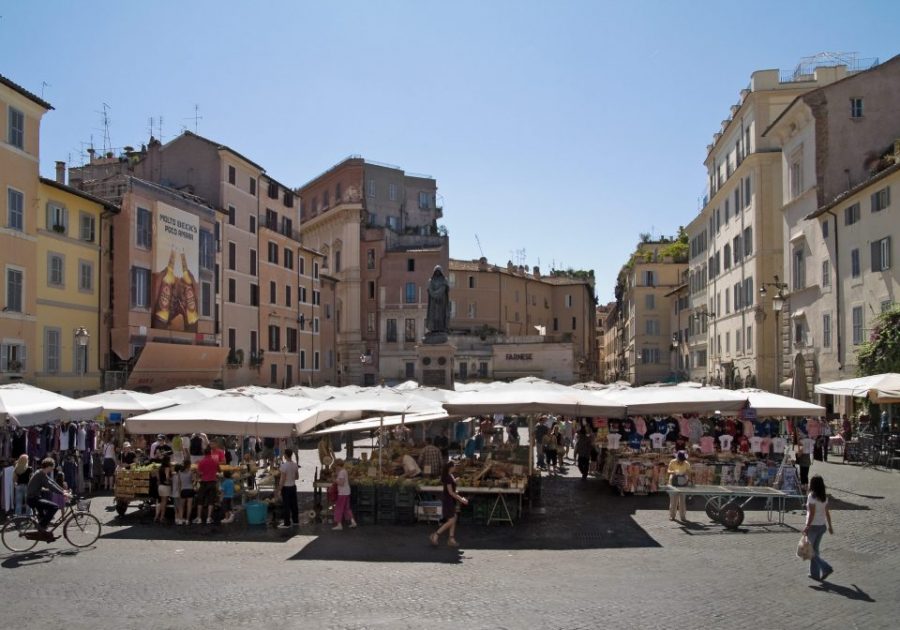
It is one of the main squares in Rome. It was built in 1456 by Pope Calixto III in a field of flowers, from which it receives its name. Market in the morning, it becomes one of the favorite areas for Italians to go out at night. It is convenient to walk through Campo dei Fiori at different times of the day and get to know its different environments and get lost in the surrounding streets. From a street entrance, Via del Pellegrino, you reach L’Arco degli Acetari, a beautiful interior courtyard. A marvel.
Piazza del Popolo
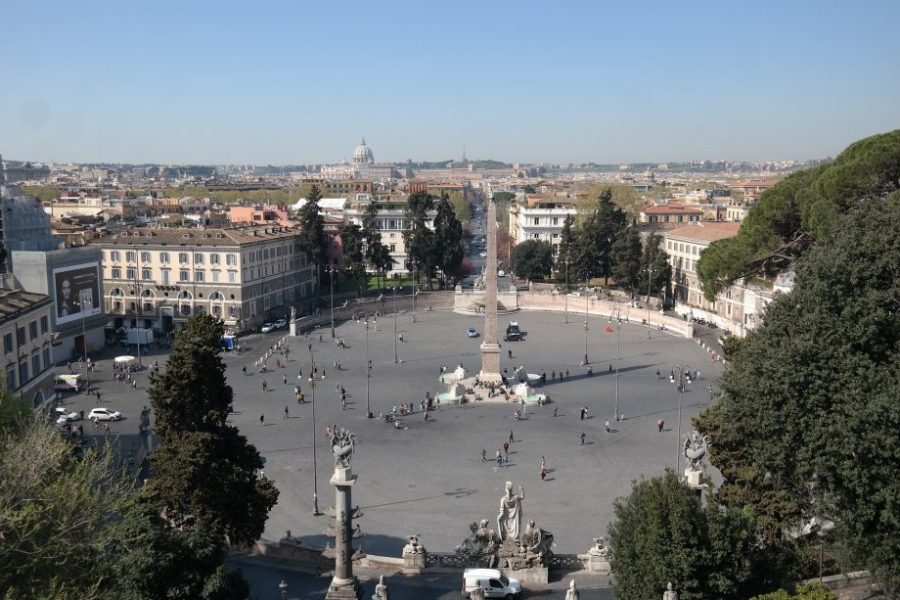
It is one of the most popular squares in Rome. In the center is an Egyptian obelisk dedicated to Ramses II, 24 m high, better known as the Flaminian Obelisk. Located in the Circus Maximus since 10 BC, it was moved in 1589 to Piazza del Popolo. In the square you can visit the Church of Santa Maria del Popolo, where there are two well-known Renaissance works by Caravaggio. In addition, there are the twin churches of Santa Maria dei Miracoli and Santa Maria in Montesanto.
Piazza Navona

Famous in ancient times for its shows of athletics championships or other genres, today the square is a meeting point for tourists and Romans, which also hosts traveling artists such as painters and portraitists. In the year 86 AD, in Piazza Navona stood the stadium of Domitian. Today its main attraction are the three fountains built under the mandate of Gregorio XIII Boncompagni: the Fontana dei Quattro Fiumi, the Fontana del Moro and the Fontana del Nettuno.
Santa Maria in Trastevere
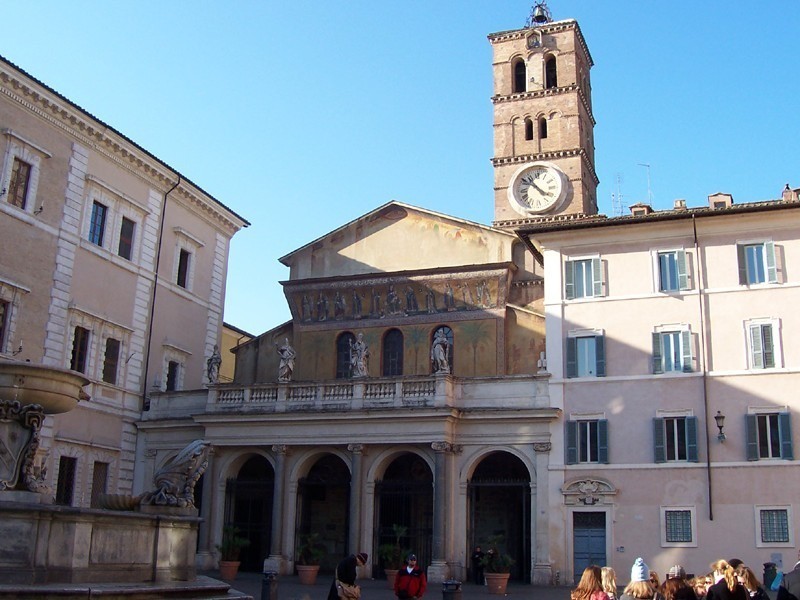
The bohemian neighborhood of the city and one of the most popular in the city. Life in this neighborhood revolves around the Piazza di Santa Maria in Trastevere. In it we can find the old Basilica of Santa Maria in Trastevere, based on the remains of a primitive church from the Paleo-Christian era, linked to Pope San Calixto. On Sundays, the most popular flea market in Rome, the Porta Portese, is held. In it you will find everything, antiques, clothes, records, books or whatever you are looking for.
Campidoglio
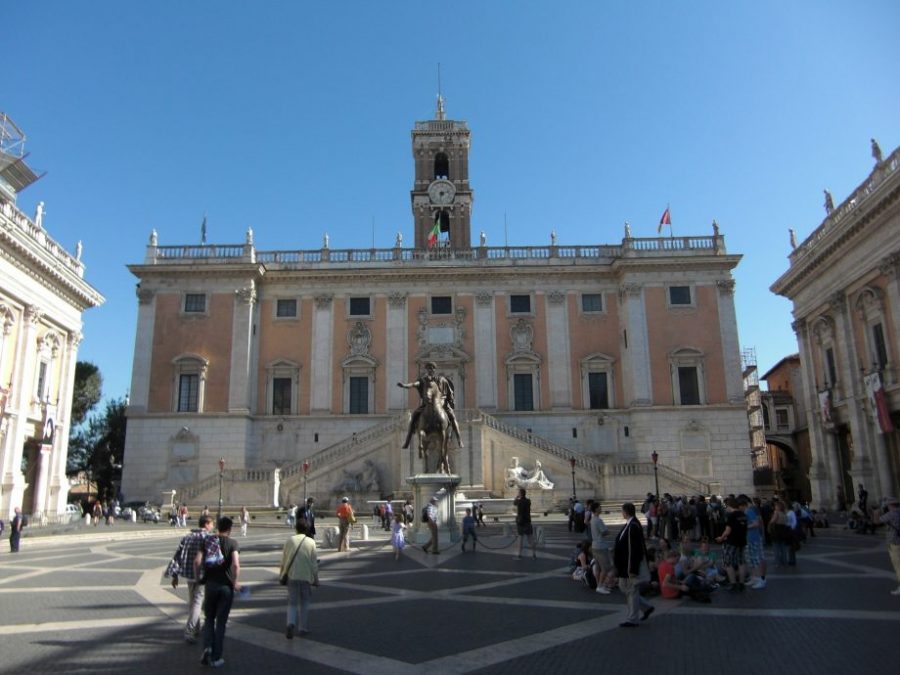
The Piazza del Campidoglio or Capitol Square is located at the top of the Capitoline Hill. Hence its name. It is one of the main tourist centers of the city, a few meters from Piazza Venezia. In the center of the square stands the equestrian sculpture of Marco Aurelio in gilt bronze, located in the Plaza de San Juan de Letrán and relocated in the center of the square at the request of Pope Paul III.
Paul III Farnese himself, after the visit of Emperor Charles I in 1536, was embarrassed by the appearance of the hill and commissioned Michelangelo to design a new square. The Campidoglio is surrounded by three palaces: the Palazzo Senatorio, which is today the seat of the Rome City Hall, and two other buildings, linked by the Lapidaria underground gallery, which make up the Capitoline Museums, one of the oldest in the world. In these is the sculpture of the mythical Capitoline Wolf, which is part of the legend of Romulus and Remus.
Piazza della Rotonda

The Piazza della Rotonda takes its name from the Church of Santa Maria Rotonda. What few people know is that this is the true name of the majestic Pantheon. During the 19th century, a bustling and well-known market of the time was held in Piazza della Rotonda. The shopkeepers offered all kinds of products, from pets to any food such as fish or vegetables. Pope Pius VII moved the market to another neighborhood and thus create a square that would fit the architectural grandeur of the place. In the heart of the square there is a beautiful fountain crowned by an Egyptian obelisk. The surrounding terraces are a pleasure to observe the Pantheon.

A few minutes from the Trevi Fountain, Piazza Barberini is known for hosting the Triton Fountain, the work of Gian Lorenzo Bernini in 1643, made during the papacy of Urbani VIII. Triton appears in the fountain sitting on an open shell, which is held by four dolphins. Triton in turn raises a shell from which water flows. A little more hidden, in one of the corners of the square, is the Fountain of the Bees, decorated with large bees that are the emblem of the Barberini family.
Piazza della Repubblica
The Piazza della Repubblica is a large arcaded roundabout, built in the 19th century in memory of the ancient ruins that were found in the area. It is one of the most important arteries of Rome built during the urban development carried out after the capital of Rome. It communicates the center from the Colosseum with the main station of the city, through Via Nazionale. The square is very close to the Teatro dell’Opera, the Baths of Diocletian and the Basilica of Saint Mary of the Angels and the Martyrs.
Fontana delle Tartarughe
The Fontana delle Tartarughe, located in Piazza Mattei in the Roman Ghetto, between Piazza Venezia and Campo dei Fiori, is one of the most charming fountains in Rome. Something hidden for tourists, those who find it always remember it. It was built in 1581 and was to contain four ephebes and eight dolphins, first in marble and then in bronze. However, when the works concluded 7 years later, the dolphins were not placed because the water pressure did not allow the expected elevation.
The turtles that the ephebes seem to push when leaning on the upper bowl, and which give the fountain its name, were added after the restoration of 1658 by the will of Pope Alexander VII and attributed to Bernini. The square was in the center of one of the palaces belonging to the powerful Mattei family. The fountain was to be placed in the market hall, in Giudea square, but pressure from one of the Mattei brothers caused it to be built in the square in front of his palace, in exchange for the family agreeing to pave it and maintain it. clean.